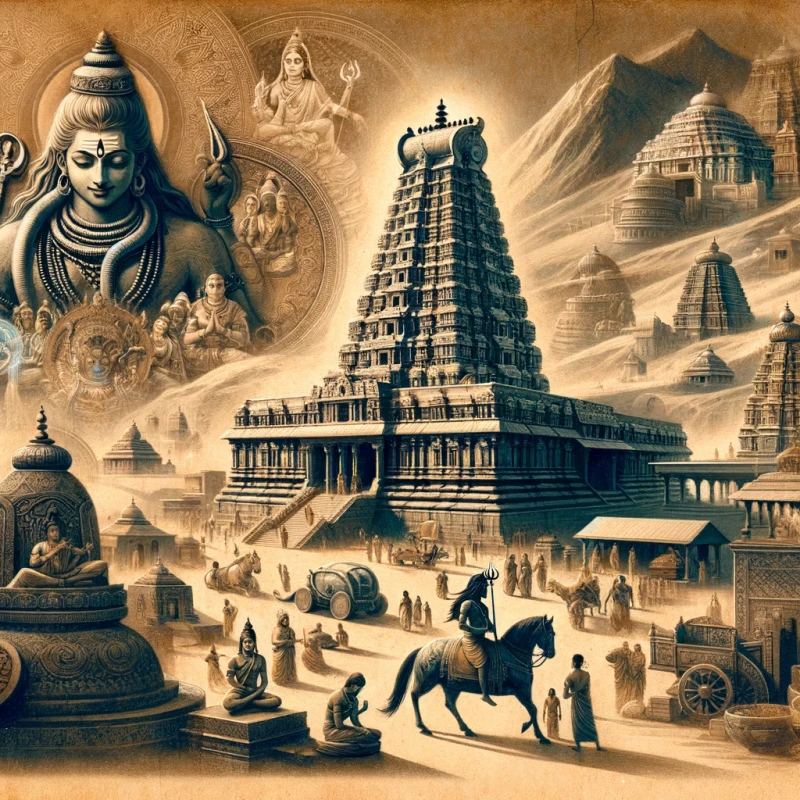- Mar 11, 2024
-
The history of the Tiruvannamalai temple, also known as the Arunachalesvara or Annamalaiyar Temple, is a fascinating journey through time, showcasing the spiritual and architectural grandeur of Tamil Nadu. This temple, dedicated to Lord Shiva, is nestled at the base of the sacred Arunachala Hill and is significant for its connection to the element of fire, one of the five elements in Hindu philosophy.
The Beginnings and Ancient Times:
Ancient Tamil poets like Nakkirar, Kapilar, and Paranar have mentioned the shrine, indicating its significance from as early as the 1st century BCE. The temple's history is also deeply intertwined with the lives of the Nayanar saints, Sambandar and Appar, who composed poems about it in the 7th century. This suggests that even before the temple became the grand structure it is today, it was an important site of worship.
Royal Patronage and Expansion:
The Chola Dynasty, ruling from 850 to 1280 CE, were among the temple's earliest known patrons, contributing significantly to its structure and spiritual wealth. Inscriptions from this period detail gifts from the Chola kings, emphasizing the temple's importance. The temple saw further expansion under the Vijayanagara Empire, with significant contributions from kings like Krishnadeva Raya. The Rajagopuram, the temple's tallest tower, was started by Krishnadevaraya and completed by Sevappa Nayaka of the Nayakar dynasty, marking a critical phase in the temple's architectural development.
Modern History and Preservation:
The temple has witnessed various rulers, including the Nawab of Carnatic in the 17th century and European colonial powers, before finally coming under British rule in the 19th century. In 2002, the Archaeological Survey of India declared the temple a national heritage monument, though its stewardship has seen changes due to legal actions.
The Temple Today:
The Arunachalesvara Temple, with its sprawling complex, houses numerous shrines and halls, including the remarkable thousand-pillared hall from the Vijayanagar period. The temple's layout, with four massive gateway towers, reflects the architectural grandeur of its time. The eastern tower, or Rajagopuram, stands as a testament to the devotion and architectural brilliance of the eras gone by.
This temple is not just an architectural marvel but a living monument of faith, attracting millions of devotees, especially during the Karthigai Deepam festival. It represents Lord Shiva's element of fire, maintaining a warm environment around its sanctum throughout the year, irrespective of the external weather conditions.
The Tiruvannamalai Temple, through its centuries-long history, stands as a beacon of Hindu spirituality and architectural splendor. Its continuous evolution under various dynasties and rulers showcases the enduring devotion to Lord Shiva and the unbroken chain of spiritual heritage in Tamil Nadu


Comments :
Currently, there are no comments in this post. Be the first person to comment on this post.